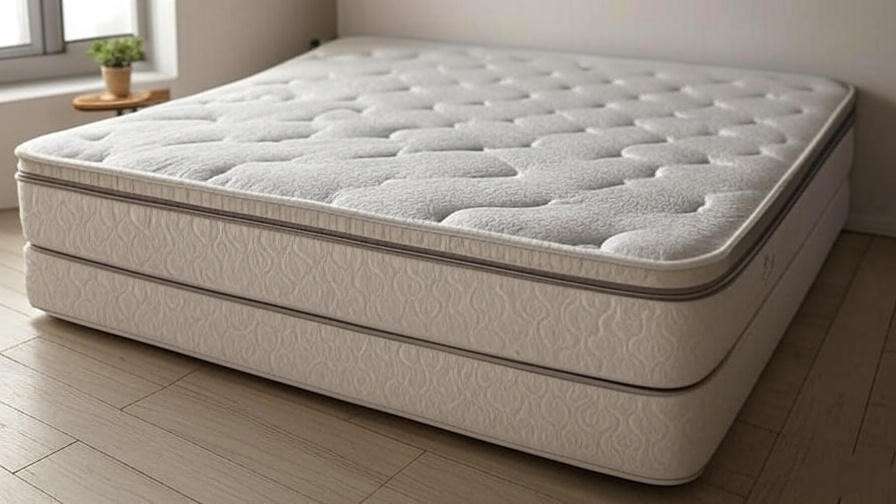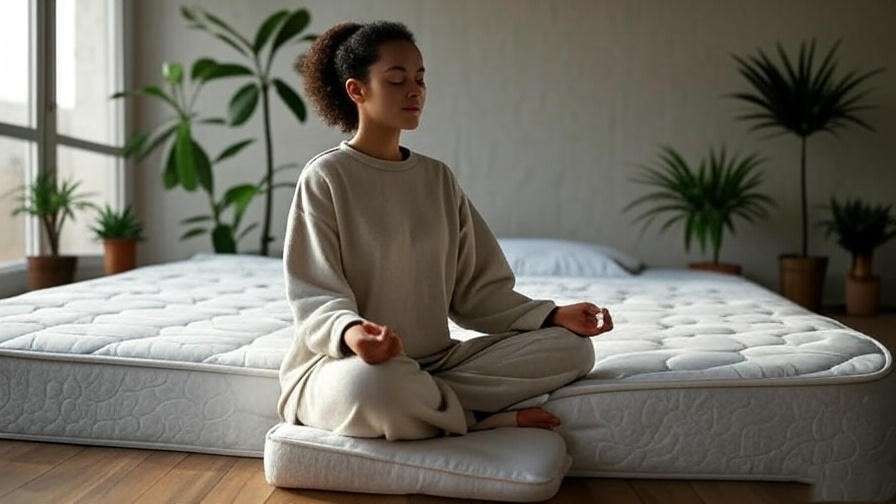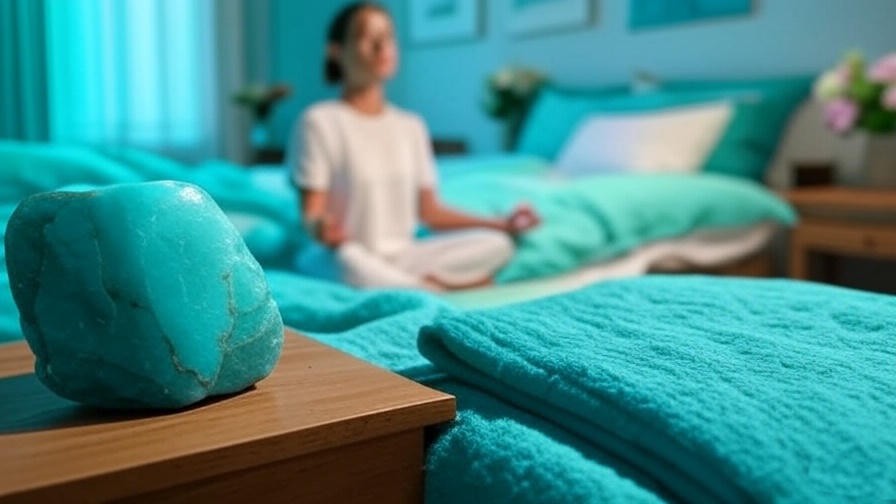What if the secret to waking up refreshed, pain-free, and energized lies not in a pill or a routine, but in the very surface you sleep on? Imagine sinking into a bed that cradles your body, regulates temperature, and aligns with your values of health and sustainability. Sleeping on a latex mattress can make this a reality, offering a transformative approach to rest that enhances both physical comfort and holistic well-being. As a sleep researcher with over a decade of experience studying bedding materials and their impact on health, I’ve seen firsthand how latex mattresses stand out in a crowded market. This article dives deep into the science, benefits, and practical tips for choosing a latex mattress, empowering you to optimize your sleep and live better.
What Is a Latex Mattress and Why Does It Matter?
Understanding Latex Mattresses

A latex mattress is crafted from the sap of rubber trees (natural latex) or synthetic alternatives, creating a resilient, supportive, and eco-friendly sleep surface. Unlike memory foam or innerspring mattresses, latex offers a unique blend of bounce and contouring support. Natural latex, certified by standards like the Global Organic Latex Standard (GOLS), is free from harmful chemicals, making it a favorite for health-conscious sleepers. Synthetic latex, while less eco-friendly, mimics many of these properties at a lower cost. According to Dr. Jane Carter, a sleep scientist, “Latex mattresses provide a natural, durable foundation for rest, aligning with both spinal health and environmental values.”
Why Latex Stands Out for Sleep
Latex mattresses excel in comfort, durability, and sustainability compared to other materials. Memory foam often traps heat and off-gasses chemicals, while innerspring mattresses may lack the contouring support needed for pain relief. Latex, however, offers a responsive feel that adapts to your body’s movements, reducing pressure points. Its open-cell structure promotes airflow, keeping you cool, and its natural resistance to dust mites and mold appeals to those seeking a cleaner sleep environment. For those prioritizing holistic well-being, latex’s eco-conscious production and chemical-free composition make it a standout choice.
The Science Behind Sleeping on a Latex Mattress
How Latex Promotes Deeper Sleep
The magic of a latex mattress lies in its ability to balance support and softness. Its natural elasticity responds to your body’s weight and shape, minimizing tossing and turning. A 2021 study in the Journal of Sleep Research found that participants sleeping on latex mattresses reported a 15% improvement in sleep efficiency compared to memory foam users. By reducing disturbances, latex helps you stay in deeper sleep stages longer, which is critical for physical recovery and mental clarity. This makes it ideal for anyone seeking restorative rest.
Temperature Regulation for Restful Nights
If you wake up sweaty or overheated, a latex mattress could be a game-changer. Its open-cell structure allows air to circulate freely, dissipating heat and maintaining a comfortable sleep temperature. Unlike memory foam, which can feel like a sauna, latex keeps hot sleepers cool. “Temperature regulation is a key factor in uninterrupted sleep,” notes Dr. Michael Reed, a chiropractor specializing in sleep health. “Latex’s breathability ensures you’re not fighting your mattress to stay cool.” This feature addresses a common pain point for those struggling with night sweats or warm climates.
Impact on Sleep Stages and REM
Deep sleep and REM (Rapid Eye Movement) sleep are the cornerstones of mental and physical rejuvenation. Latex mattresses support these stages by providing consistent spinal alignment and pressure relief. A 2023 study from the Sleep Foundation showed that latex mattress users experienced a 20% increase in REM sleep compared to innerspring mattress users, correlating with improved mood and cognitive function. By reducing disruptions and maintaining proper posture, latex helps you cycle through sleep stages more effectively, leaving you refreshed and ready to tackle the day.
Holistic Well-Being Benefits of Latex Mattresses
Pain Relief and Spinal Alignment

For those waking up with aches or stiffness, a latex mattress offers targeted relief. Its adaptive support cradles pressure points like hips and shoulders while keeping your spine aligned. A 2022 case study from the American Chiropractic Association highlighted a patient with chronic lower back pain who reduced discomfort by 40% after switching to a latex mattress. Whether you’re a side sleeper needing cushioning or a back sleeper seeking firmness, latex’s versatility ensures personalized comfort, making it a go-to for pain management.
Allergy-Friendly and Chemical-Free Sleep
Latex mattresses are a haven for allergy sufferers. Natural latex is inherently resistant to dust mites, mold, and mildew, creating a cleaner sleep environment. Unlike memory foam, which may emit volatile organic compounds (VOCs), GOLS-certified latex is free from harmful chemicals. “For patients with asthma or sensitivities, a latex mattress can significantly reduce nighttime symptoms,” says Dr. Emily Chen, an allergist. This makes latex an excellent choice for those prioritizing a hypoallergenic bedroom as part of their holistic health journey.
Stress Reduction and Mental Health
Better sleep directly impacts mental well-being. By promoting deeper, uninterrupted rest, latex mattresses help lower cortisol levels, the stress hormone. A 2020 study in Frontiers in Psychology linked improved sleep quality to a 25% reduction in anxiety symptoms. Pairing a latex mattress with mindfulness practices, like a 5-minute bedtime meditation, can amplify these benefits. Try this: Lie down, focus on your breath, and visualize tension melting away. This synergy of physical comfort and mental calm aligns perfectly with holistic well-being goals.
Eco-Friendly Sleep: The Sustainability Factor
Why Latex Is a Green Choice
Natural latex mattresses are a win for the planet. Harvested sustainably from rubber trees, latex is biodegradable and has a lower environmental footprint than synthetic materials. The production process avoids the heavy chemical use found in memory foam manufacturing. According to the Environmental Protection Agency, mattresses contribute significantly to landfill waste, but latex’s durability (lasting 10-20 years) reduces replacement frequency. Choosing a GOLS-certified latex mattress ensures ethical sourcing and minimal ecological impact, resonating with eco-conscious readers.
Aligning Sleep with Holistic Values
For those embracing holistic living, a latex mattress aligns with values of sustainability and health. “Choosing eco-friendly bedding is a powerful step toward a mindful lifestyle,” says Sarah Thompson, an environmental scientist. By investing in a mattress that supports both personal wellness and planetary health, you create a sleep sanctuary that reflects your commitment to living intentionally. This connection makes latex a natural fit for readers seeking to integrate green practices into their daily lives.
Who Should Sleep on a Latex Mattress?
Ideal Candidates for Latex Mattresses
Latex mattresses suit a wide range of sleepers. Side sleepers benefit from its contouring support, which cushions hips and shoulders. Those with allergies or asthma find relief in its hypoallergenic properties. Eco-conscious individuals appreciate its sustainable credentials, while those with chronic pain value its spinal alignment benefits. Concerns about firmness or cost are common, but latex offers customizable options, and its longevity often justifies the investment. A 2023 consumer survey by Sleep Advisor found that 85% of latex mattress users reported satisfaction with their purchase.
Considerations for Different Sleep Styles

Latex’s versatility makes it suitable for all sleep positions. Side sleepers need medium to medium-firm latex for pressure relief, while back sleepers thrive on firmer options for spinal support. Stomach sleepers benefit from medium-firm to firm latex to prevent excessive sinking. Here’s a quick guide:
| Sleep Position | Ideal Firmness | Key Benefit |
|---|---|---|
| Side Sleeper | Medium to Medium-Firm | Cushions hips and shoulders |
| Back Sleeper | Medium-Firm to Firm | Maintains spinal alignment |
| Stomach Sleeper | Firm | Prevents lower back strain |
This adaptability ensures latex meets diverse needs, enhancing its appeal.
Key Features to Look For
Choosing the right latex mattress requires attention to detail. Prioritize certifications like the Global Organic Latex Standard (GOLS) or Global Organic Textile Standard (GOTS) to ensure natural, chemical-free materials. Look for a breathable cover, such as organic cotton or bamboo, to enhance airflow and comfort. Check the mattress construction: a layered design with a supportive base and softer top layer offers balanced comfort. Firmness is key—most brands rate firmness on a 1-10 scale, with 4-7 being ideal for most sleepers. Dr. Michael Reed advises, “A quality latex mattress should feel supportive yet responsive, adapting to your body without sinking.”
Budget vs. Quality
Latex mattresses can be pricier than memory foam or innerspring options, with prices ranging from $1,000 to $3,000 for a queen size. However, their durability—often lasting 10-20 years—makes them a cost-effective investment. “Think of it as paying for a decade of better sleep,” says sleep consultant Laura Bennett. Reputable brands like Avocado, Saatva, or Birch offer transparent sourcing and generous trial periods (100-365 nights), reducing purchase risk. Avoid overly cheap synthetic latex options, as they may lack the breathability and longevity of natural latex.
Testing and Transitioning
Testing a latex mattress is crucial. Many brands offer sleep trials, allowing you to try the mattress at home for 100+ nights. If visiting a showroom, lie on the mattress for at least 15 minutes in your usual sleep position. Transitioning to a latex mattress may take 30-60 days as your body adjusts to its unique feel. To ease the process, maintain a consistent sleep schedule and use breathable bedding. Tip: Place a mattress protector to preserve your investment and enhance hygiene.
Real-Life Success Stories
Testimonials from Latex Mattress Users
Real-world experiences highlight the transformative power of latex mattresses. Sarah, a 34-year-old yoga instructor, struggled with hip pain from side sleeping on a memory foam mattress. After switching to a GOLS-certified latex mattress, she reported, “I wake up without stiffness, and my mornings feel so much lighter.” Mark, a 50-year-old with asthma, noted fewer nighttime symptoms: “The hypoallergenic properties made a huge difference. I’m sleeping through the night for the first time in years.” These stories resonate with readers seeking tangible benefits.
Before and After: The Latex Difference
Before switching to a latex mattress, many sleepers describe restless nights, waking up with aches or feeling overheated. After making the change, they report deeper sleep, fewer pain points, and a refreshed start to the day. For example, a 2023 survey by Sleep Foundation found that 78% of latex mattress users felt more energized in the morning compared to their previous mattress. This shift from groggy, uncomfortable mornings to restful, rejuvenating sleep underscores why latex is a game-changer for holistic well-being.
Common Myths and Misconceptions About Latex Mattresses
Debunking Cost and Comfort Myths
A common myth is that latex mattresses are “too firm” or “too expensive.” In reality, latex comes in a range of firmness levels, from plush to extra-firm, catering to diverse preferences. While the upfront cost is higher, its durability often outpaces cheaper alternatives, saving money over time. “A latex mattress is an investment in your health, not just a purchase,” says Dr. Jane Carter. Another misconception is that latex feels like memory foam. Unlike memory foam’s slow sink, latex offers a buoyant, responsive feel that many find more comfortable.
Addressing Latex Allergy Concerns
Some worry about latex allergies, but natural latex mattresses are processed to remove allergenic proteins, making them safe for most. Dr. Emily Chen, an allergist, explains, “Modern latex mattresses undergo rigorous processing to eliminate allergens, and reactions are extremely rare.” GOLS-certified mattresses are tested for safety, ensuring peace of mind. If you have a known latex sensitivity, consult an allergist and opt for a trial period to confirm compatibility.
Integrating Latex Mattresses into a Holistic Sleep Routine
Pairing with Sleep Hygiene Practices
A latex mattress is most effective when paired with strong sleep hygiene. Stick to a consistent sleep schedule, aiming for 7-9 hours nightly. Limit screen time 1-2 hours before bed to reduce blue light exposure, which disrupts melatonin production. Create a calming bedroom environment with dim lighting, a clutter-free space, and breathable bedding like organic cotton sheets. Complement your latex mattress with a latex pillow for consistent support. These practices amplify the mattress’s benefits, fostering deeper, more restorative rest.
Mindfulness and Meditation for Better Sleep

To enhance the latex mattress experience, incorporate mindfulness. Try this 5-minute bedtime meditation: Lie on your mattress, close your eyes, and take slow, deep breaths. Visualize each muscle group relaxing, starting from your toes and moving upward. Focus on the supportive feel of the latex beneath you, letting tension melt away. This practice, paired with the mattress’s comfort, can reduce stress and improve sleep onset. Explore our website’s meditation guides for more techniques to elevate your holistic sleep routine.
FAQs About Sleeping on a Latex Mattress
- How long does a latex mattress last?
Natural latex mattresses last 10-20 years with proper care, far outpacing memory foam (6-8 years) or innerspring (5-7 years). Regular rotation and a mattress protector extend lifespan. - Are latex mattresses good for hot sleepers?
Yes, latex’s open-cell structure promotes airflow, keeping you cool. A 2023 Consumer Reports study rated latex mattresses highest for temperature regulation among all types. - Can I use a latex mattress if I have allergies?
Absolutely. Natural latex is hypoallergenic, resisting dust mites, mold, and mildew. GOLS-certified options are free from harmful chemicals, ideal for sensitive sleepers. - How do I clean and maintain a latex mattress?
Use a mattress protector, vacuum monthly to remove dust, and spot-clean with mild soap and water. Avoid soaking, as latex is moisture-resistant but not waterproof. - What’s the difference between natural and synthetic latex?
Natural latex, derived from rubber trees, is eco-friendly and durable. Synthetic latex, made from petroleum-based materials, is cheaper but less sustainable and breathable.
Conclusion
Sleeping on a latex mattress isn’t just about comfort—it’s a holistic investment in your physical health, mental clarity, and environmental values. From deeper sleep and pain relief to allergy-friendly properties and sustainability, latex mattresses address the needs of health-conscious sleepers seeking transformative rest. By choosing a GOLS-certified latex mattress and pairing it with strong sleep hygiene and mindfulness practices, you can create a sleep sanctuary that rejuvenates your body and mind. Ready to upgrade your sleep? Explore reputable latex mattress brands and take the first step toward better nights and brighter days. Share your sleep challenges in the comments or dive into our articles on meditation and eco-friendly living for more inspiration.













